Overview
Thank you for your interest in our Categorical Dermatology Residency Program.
Among the more than 100 medical specialties and subspecialties, the Department of Dermatology was the third department established at Cleveland Clinic and is currently located on the sixth floor of the outpatient superstructure, known as the A Building - Crile Building.
The Department of Dermatology has grown over the years to include over 50 full time clinical staff, of which there are 26 active teaching faculty, and 22 advanced practice providers, spread over our main campus location and 10 regional family health centers. Our surgical dermatology department includes seven full time MSDO fellowship trained Mohs surgeons, as well as two fellowship trained cosmetic surgeons. We have two fellowship trained pediatric dermatologists and eight fellowship trained dermatopathologists. Among our general dermatologists, we have specialists in contact and occupational dermatitis, phototherapy, oral and bullous diseases and hair disorders. Currently, we have 17 residents undergoing extensive and rigorous training in this all-encompassing dermatologic learning environment.
The Department of Dermatology offers a four-year categorical training program that fulfills the requirements of the American Board of Dermatology and the ACGME. Candidates apply for a four-year program to include a program specific transitional PGY-1 year with rotations in internal medicine and other specialties relevant to dermatology.
A commitment to excellence in residency training is one of the highest priorities of the Cleveland Clinic. Our Dermatology Residency Program provides comprehensive academic and clinical experiences in dermatology and the subspecialty fields of dermatopathology, pediatric dermatology and dermatologic surgery. Such training enables our graduates to pursue successful careers in academic dermatology, clinical dermatology, as well as subspecialty training in dermatopathology, pediatric dermatology, cosmetic dermatology and dermatologic surgery.
The overall specific goals of the Dermatology training program include:
- To provide residents with the requisite skills in differential diagnosis and in the management of dermatological problems which span the spectrum of common as well as complex dermatological diseases that encompass a multidisciplinary approach.
- To foster the development of essential personal and intellectual attributes which will facilitate growth and development throughout their career.
- To facilitate and foster the personal career development of every resident physician participating in the training program. While service and clinical experience are essential components of house staff training, the highest priority is to ensure exemplary educational experiences, which prepares a resident to embark on whatever career path is ultimately chosen.
- To develop the skills, knowledge and attitudes necessary to achieve competency in the six areas of Core Competency as defined by the Accreditation Council of Graduate Medical Education (ACGME): patient care, medical knowledge, practice-based learning & improvement, interpersonal & communication skills, professionalism and systems-based practice.
- To develop the skills and knowledge necessary to participate in a successful scholarly activity during their 4 years of residency training.
Intern year
Our program is a four-year categorical program and as such, all residents complete their PGY-1 year at Cleveland Clinic. Staff and residents agree that this structure has many advantages including excellent training in general medicine, familiarity with the hospital and its electronic medical records system and generation of many colleagues in fields other than dermatology.
Several rotations have been carefully chosen to provide a well-rounded fund of knowledge in general inpatient medicine while providing exposure to fields of medicine and surgery that routinely have the most overlap with dermatology, such as rheumatology, infectious disease and plastic surgery. Early exposure to dermatology and dermatopathology during this year allows for a smooth transition into the dermatology residency period. We offer a pediatric PGY-1 preliminary year for interested residents. Please indicate your interest at the time of scheduling your interview.
Rotations
PGY 1
| Dermatology (Inpatient/Outpatient) | 9 weeks |
| Dermatopathology | 4 weeks |
| Plastic Surgery | 2 weeks |
| Infectious Disease | 4 weeks |
| Rheumatology | 4 weeks |
| Emergency Department | 4 weeks |
| Internal Medicine (2 weeks of ICU) | 20 weeks |
| Electives: Psychiatry, Allergy | 2 weeks |
| Vacation | 3 weeks |
PGY 2 - 4
| General Dermatology | 20 - 24 weeks |
| Dermatologic Surgery | 4 weeks |
| Hospital Consults | 4 weeks |
| Dermatopathology | 4 weeks |
| Pediatric Dermatology | 4 weeks |
| Environmental Dermatology | 4 weeks |
| Teledermatology | 4 weeks |
| Electives* (PGY 4) | 3-4 weeks |
On call
PGY-1 residents take call depending on their rotations. PGY-2 residents are responsible for on call activities in the core dermatology program and rotate every week. There is no in-house call for core dermatology. All residents abide by the standards of clinical and educational work hours set by the ACGME.
Faculty
Leadership
Gowri Kabbur, MD
Program Director,
Dermatology Residency Program
Marilyn Wickenheiser, MD
Associate Program Director,
Dermatology Residency Program
Faculty
- John Anthony, MD, Occupational Dermatology/Patch Testing, General Dermatology
- Joshua Arbesman, MD, Pigmented Lesions Clinic, Melanoma Research
- Wilma Bergfeld, MD, Dermatopathology, General Dermatology
- Steven Billings, MD, Dermatopathology
- Anthony Fernandez, MD, Complex Medical Dermatology, General Dermatology, Dermatopathology
- Mahwish Irfan, MD, Pediatric Dermatology
- Gowri Kabbur, MD, Complex Medical Dermatology, General Dermatology
- Michelle Kerns, MD, General Dermatology
- Shilpi Khetarpal, MD, Cosmetic Dermatology
- Jennifer Lucas, MD, Dermatologic Surgery
- Jon Meine, MD, Dermatologic Surgery
- Melissa McEnery-Stonelake, MD, Dermatologic Surgery
- Taryn Murray, MD, Cosmetic Dermatology
- Melissa Piliang, MD, Dermatopathology, General Dermatology
- Christine Poblete-Lopez, MD, Dermatologic Surgery
- Geraldine Ranasinghe, MD, General Dermatology
- Claudia Ricotti, MD, Complex Medical Dermatology, General Dermatology, Dermatopathology
- Kathryn Riley, MD, General Dermatology
- Matan Rothschild, MD, Complex Medical Dermatology, General Dermatology
- Joan Tamburro, DO, Pediatric Dermatology
- Stephanie Trovato, MD, General Dermatology
- Rashmi Unwala, MD, Complex Medical Dermatology, General Dermatology
- Allison Vidimos, MD, Dermatologic Surgery
- Christine Warren, MD, General Dermatology
- Marilyn Wickenhesier, MD, Complex Medical Dermatology, General Dermatology
- David Xiong, MD, Complex Medical Dermatology, General Dermatology
Consultants
- James S. Taylor, MD,* Patch Testing
Residents
PGY-4
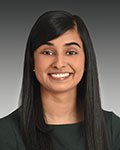
Shifa Akhtar, MD
- Undergraduate: University of Miami
- Medical School: Florida International University Herbert Wertheim College of Medicine

Kendall Black, MD
- Undergraduate: The University of Texas
- Medical School: McGovern Medical School at UTHealth
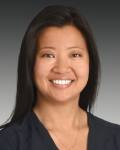
Kylee Kus, MD*
- Undergraduate: Tufts University
- Medical School: Oakland University William Beaumont School of Medicine
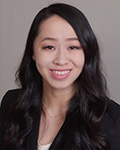
Tiffany Wu, MD*
- Undergraduate: University of California, Berkeley, California
- Medical School: Case Western Reserve University School of Medicine
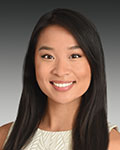
Laura Xiang, MD
- Undergraduate: Case Western Reserve University
- Medical School: Case Western Reserve University School of Medicine
PGY-3
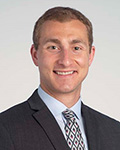
Joshua P. Gallop, MD
- Undergraduate: University of Minnesota, Minnesota, MN
- Medical School: Case Western Reserve University School of Medicine
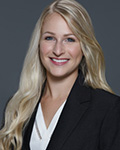
Olivia Lawson, MD
- Undergraduate: James Madison University, Harrisonburg, Virginia
- Medical School: University of Tennessee Health Science Center College of Medicine
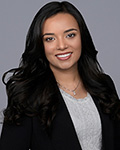
Noreen Mohsin, MD
- Undergraduate: McGill University, Montreal, Quebec
- Medical School: University of Miami Leonard M. Miller School of Medicine
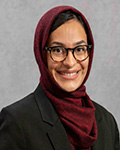
Sadia Tahir, MD
- Undergraduate: The College of New Jersey, Ewing, New Jersey
- Medical School: University of Toledo College of Medicine and Life Sciences
PGY-2
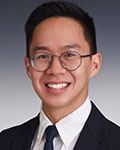
Anthony Chen, MD
- Undergraduate: Princeton University, Princeton New Jersey
- Medical School: West Virgina University School of Medicine

Jessica Kern, MD
- Undergraduate: University of Southern California
- Medical School: University of California, San Diego School of Medicine
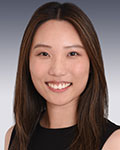
Angela Wei, MD
- Undergraduate: Duke University, Durham North Carolina
- Medical School: Case Western Reserve University School of Medicine
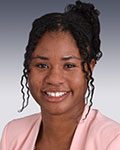
Kaelynn Workman, MD
- Undergraduate: Cornell University, Ithaca, NY
- Medical School: Case Western Reserve University School of Medicine
PGY-1
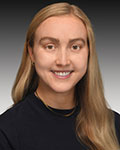
Lydia Cassard, MD
- Undergraduate: New York University
- Medical School: Cleveland Clinic Lerner College of Medicine
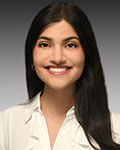
Misha Haq, MD
- Undergraduate: University of Cincinnati
- Medical School: Oakland University William Beaumont School of Medicine
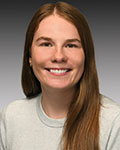
Kathryn Lencioni, MD
- Undergraduate: University of Nevada, Reno
- Medical School: University of Nevada, Reno
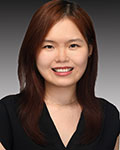
Weiying Lu, MD
- Undergraduate: Boston College
- Medical School: Zucker School of Medicine at Hofstra/Northwell
*Chief Resident
Curriculum
Core residency program
There are 13 four-week modules during each academic year, divided among general dermatology and subspecialty clinics, each of which are staffed by respective experts in the field. These include monthly rotations in dermatologic surgery, dermatopathology, pediatric dermatology, patch testing, hospital consults and teledermatology. In the 7 four-week modules spent in general dermatology clinics, residents are similarly exposed to connective tissue diseases, bullous diseases, hair loss, lymphoma and general medical dermatology.
During the hospital consult rotation, residents have the opportunity to evaluate and treat inpatient dermatological problems, develop diagnostic strategies, interpret laboratory findings, order medications and counsel patients and the consulting team. Residents round daily with a weekly assigned attending.
Education is a key focus in our residency program, with enhanced learning opportunities integrated into the first-year dermatology curriculum (PGY-2), particularly through Chief Rounds. Details about teaching conferences, textbook club and other planned educational activities are provided below. Up to 3 to 4-weeks of elective time is available to senior residents. Up to 2 weeks of elective time may be utilized during the end of PGY-3 year for those residents pursuing subspecialty fellowships. Senior residents may train in different departments within Cleveland Clinic or at an approved institution outside of Cleveland Clinic, potentially working with future colleagues, or pursuing fellowship interests.
Continuity clinics
Continuity clinics allow residents the opportunity to assume primary responsibility for patient evaluation and care and ensure longitudinal follow up with a cohort of patients. These half-day weekly clinics begin in the first year of dermatology training and continue through the rest of the resident’s training.
Resident surgery clinics
Surgical clinics allow residents to have a hands-on opportunity to polish their procedural dermatology skills. Supervised by any of our surgical teaching faculty, each resident has an assigned clinic every other week. Procedures such as electrodessication and curettage, standard excisions, laser treatments and cosmetic procedures are typically performed in these clinics.
The administrative and teaching responsibilities of serving as chief resident are granted to a deserving senior resident(s). Research projects are completed and presentations at major medical meetings and at the department’s Annual Research Day are expected.
Program strengths
- Large department with multiple world-renowned staff in clinical dermatology, dermatopathology, pediatric dermatology and dermatologic surgery.
- Clinical dermatology includes well-rounded training in all facets of clinical dermatology including contact dermatitis, phototherapy, oncodermatology, hair clinic, pediatric dermatology and general dermatology.
- Surgical dermatology provides exposure and training in all facets of surgical and cosmetic dermatology including but not limited to Mohs micrographic surgery, multiple lasers, neurotoxins, chemical peels, soft tissue augmentation, sclerotherapy and photodynamic therapy.
- Culturally diverse patient population with extensive exposure to all skin types.
- Tremendously supportive program directors.
- High volume of patients with emphasis on continuity of care.
- Categorical program with internship tailored toward dermatology.
Educational opportunities
Throughout the year, residents attend and participate in various scheduled teaching conferences. The lunch hour, as well as the entire Thursday morning, is protected time for residents to participate in these educational conferences. Lectures are a hybrid of in-person and virtual sessions.
City wide grand rounds
Every Thursday morning, patients with rare or unusual skin conditions or patients who pose diagnostic or therapeutic challenges, participate in grand rounds attended by staff, residents and medical students from Cleveland Clinic, Case Western Reserve University and Metro Health Medical Center Departments of Dermatology. The location of grand rounds rotates among the three programs. At our program, 3 - 4 cases are presented by the first-year residents and discussed as a group following virtual or in person patient viewing.
Textbook club
Our curriculum reviews key seminal chapters in the Bolognia Dermatology textbook. Readings are assigned on a weekly basis. Additional textbooks used for selected chapters and textbook club readings include Andrews’ Clinical Dermatology, Fitzpatrick’s General Dermatology, Wolverton’s Drugs in Dermatology, Spitz’s Genodermatoses, Robinson’s Surgery of the Skin, Hurwitz’s Clinical Pediatric Dermatology, Weedon’s Skin Pathology among others. Residents have access to extensive resources through the Cleveland Clinic, including ClinicalKey and VisualDx. The various curricula for dermatopathology, dermatologic surgery and pediatric dermatology are similarly covered during protected education time over the noon hour.
Journal club and other educational activities
The Journal of the American Academy of Dermatology, JAMA Dermatology and Dermatologic Surgery journals are routinely reviewed. Selected readings may be reviewed from Journal of Investigative Dermatology, International Journal of Dermatology, British Journal of Dermatology and Drugs in Dermatology, among others. Typically, residents are assigned specific articles to review, critique and summarize for the benefit of the group.
Weekly dermatopathology lecture series are supplemented with additional workshops, outside lecturers and review sessions throughout the year.
Our residents participate in several faculty-led cadaver sessions throughout the year focused on anatomy, and hands on practice taking Mohs layers and planning/executing flaps and grafts.
Staff lectures
Each staff provides didactic lectures based on their areas of interest.
Guest lectures
Guest lecturers both from within Cleveland Clinic and outside institutions are invited to the dermatology department for participation in grand rounds, educational meetings and noon conferences.
Scholarly activity
Each resident participates in numerous scholarly activities, with a culmination of presentations at our Annual Dermatology Research Day, as well as numerous local, regional and national meetings. Research projects range from IRB-sponsored projects to multiple book chapters, peer reviewed journal articles, QI projects, among others. Our program follows a GME Quality and Improvement Curriculum headed by a faculty member. All residents are required to complete a QI project by the end of residency.
Chief rounds
Weekly chief rounds consist of an afternoon of teaching sessions dedicated to PGY-2 residents. These sessions focus on a particular aspect of dermatology and are led by a senior resident in a highly collaborative learning environment. Session topics include in-depth review of medical dermatology topics, pathology unknowns, article reviews and high yield board review materials. The first year derm residents find this low-key learning environment highly effective in flattening the steep learning curve that typifies the PGY 2 year.
Conferences & meetings
Interdepartmental combined conferences
These combined conferences with other departments such as Plastic Surgery, Infectious Diseases, Rheumatology, Vascular Medicine, among others, occur throughout the year. These conferences focus on diseases and interesting or complex cases that hold a shared interest for the departments involved.
Cleveland Dermatological Society (CDS) quarterly meetings
Cleveland Clinic, University Hospitals, Metro Hospital dermatology departments, and a local community practice sponsor this meeting 4 times per year and consists of the most interesting and complex cases in dermatology, attended by over 100 dermatologists from Northeast Ohio.
Meetings
Attendance and participation in important regional and national meetings are encouraged and supported. Residents are granted 5 meeting days per year, excluding CDS meetings and the annual Ohio Dermatological Association meeting. Residents may attend the annual AAD meeting, and are encouraged to present interesting cases at the Gross and Microscopic symposium, or other podium presentations.
Additional meetings residents often attend include Ohio Dermatological Society (ODA), American Society of Dermatological Surgery (ASDS) and American Society of Dermatopathology (ASDP), among others. Locally, residents are required to attend department CME events and the Annual Dermatopathology Workshop and Medical Dermatology Update, all organized by members of our department.
Travel stipends are available annually to residents presenting at conferences through the Graduate Medical Education office.
How to Apply
Application requirements
The Cleveland Clinic Dermatology Residency Program is affirmed in its mission to holistically review all applications received to recruit the best possible residents who fit our mission. We will use the ERAS-based common supplemental application and preference signaling program for the upcoming resident recruitment season.
Applications are completed solely through the Electronic Residency Application System (ERAS). For the 2023 ERAS® cycle, our program will be participating in the supplemental ERAS application offered through the AAMC’s ERAS program. Applicants will be required to complete the MyERAS application, and participation in the supplemental ERAS application is optional.
Requirements:
- Three letters of recommendation are required. Two letters of recommendation from dermatology are preferred, but not mandatory.
- All candidates are required to have completed and received their Step 1 and Step 2 CK USMLE scores. We do not utilize minimum score requirements in our holistic review of applications.
- For International Medical Graduates, ECFMG certificates are required at the time of application submission
No exceptions will be made due to the large number of applications we receive each year.
We accept ECFMG-certified applicants. The Cleveland Clinic supports J1, H1-B and F-1 OPT Visas. Please refer to the Graduate Medical Education website for more information.
The application deadline is the first of October.
We are participating in the coordinated release of interviews in early December, as supported by the Program Directors Task Force of the Association of Professors in Dermatology. Virtual interview dates will be offered during the 2nd and 3rd weeks of January of the application cycle. We discourage sending thank you notes after an interview.
The Cleveland Clinic program will certify its rank list by early February, well ahead of the deadline for applicants to certify their rank list. Following our rank list certification, any applicant who would like to take a "second look" at our program with an in-person visit may feel free to reach out to our Program Coordinator, Cheryl Williams, to help coordinate a visit. These "second look" visits are purely to benefit our applicants who may want to our city in person prior to committing to their rank list decision.
Virtual meet & greet
An evening virtual meet and greet session with our residents will be offered to all interviewing applicants prior to their interview dates.
For more information, please contact:
Gowri Kabbur, MD
Program Director
216.444.5729
kabburg2@ccf.org
Marilyn Wickenheiser, MD
Associate Program Director
216.444.5729
wickenm@ccf.org
Cheryl Williams
Residency and Fellowship Coordinator
216.444.5933
williac@ccf.org
The Graduate Medical Education Department -- JJ24
Cleveland Clinic
9500 Euclid Ave.
Cleveland, OH 44195
Phone: 216.444.5690
Toll-free: 800.323.9259
Fax: 216.444.1162
Additional resources
- National Resident Matching Program
- National Dermatology Interest Group
- Dermatology Residency Information
- Cleveland Clinic Graduate Medical Education Website
- Learn more about Cleveland, OH
- Cleveland Clinic Main Campus Tour
Preference signaling
Preference signaling refers to the use of token(s) by residency applicants to express interest in a residency program during application review and prior to interview invite release. This formalized process allows applicants to express interest in a small number of programs apart from traditional methods of email, phone calls, or virtual or in-person away rotations. The goal is to ease application overload and provide programs credible expression of interest by applicants.
We will be participating in preference signaling for this upcoming recruitment season. Based on current trends of applicants utilizing preference signals, the high number of applications received, and the consensus of the APD PD Task Force, we will only be considering applications of those who signal interest in our program. We highly encourage applicants to signal our program if they are interested in interviewing.
Living in Cleveland
Cleveland, a mid-sized city located on Lake Erie, features a host of cultural attractions, recreational activities, major sporting events and an exploding culinary scene. Cleveland is home to the second largest theater district in the U.S., a park system featuring 23,700 acres in 18 reservations, and is the birthplace of rock ’n’ roll, home to the Rock ‘n’ Roll Hall of Fame and Museum. Cleveland Clinic is located near the University Circle area, which is the cultural epicenter of Cleveland. This area features Severance Hall and the world-renowned Cleveland Orchestra, the Cleveland Museum of Art, several other museums, and Case Western Reserve University. Downtown Cleveland, home to all major sports venues and an exploding culinary scene, is approximately two miles from Cleveland Clinic’s main campus.